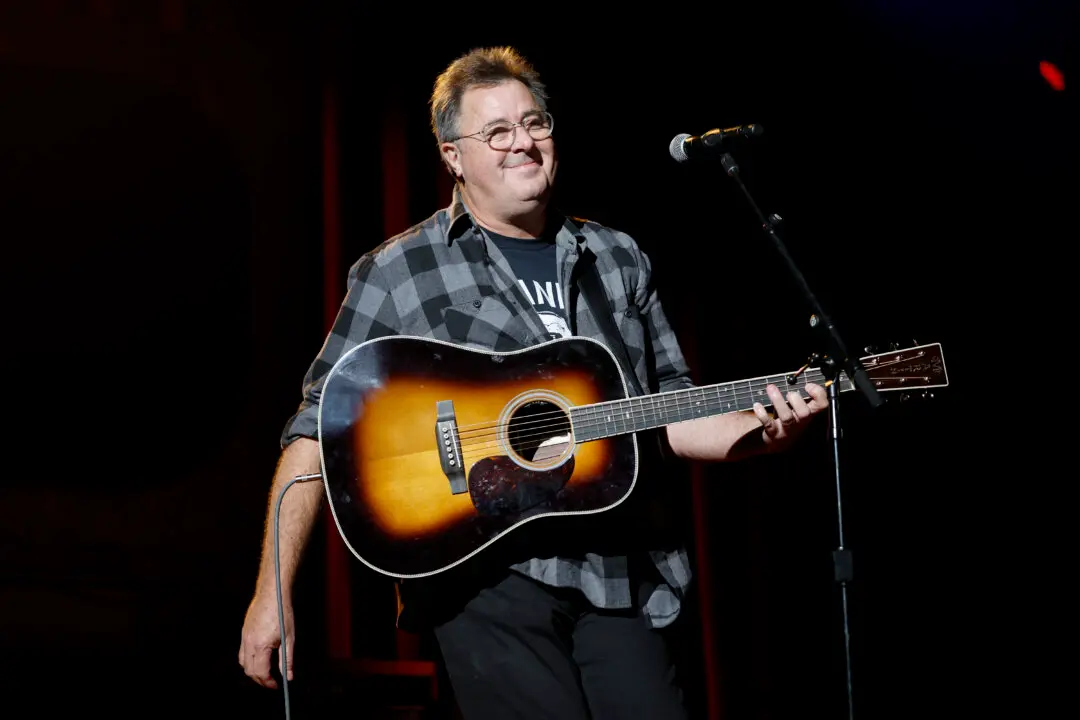One of the American West’s treasured contributions to the nation’s rich musical tapestry is the singing cowboy of the early 1900s. Entertainers like Gene Autry and Roy Rogers perfected this archetype throughout the 1940s and early 1950s. But singing cowboys at the turn of the 20th century laid the groundwork. Though many of these performers hadn’t actually spent much time on a ranch, a select few pulled from real-life ranching experience and used it as inspiration for their careers.
Author Richard Carlin explains how this mysterious musical archetype impacted the country’s view of the West in his book, “Country Music: The People, Places, and Moments That Shaped the Country Sound”: “The idea that the West was populated by a roving band of guitar-strumming, happy-go-lucky tunesmiths was spread mostly by city-born performers, most of whom had never punched cattle.”
He also states, “Undoubtedly, some cowboys did sing—probably at night, to entertain themselves after a hard day on the trail.”
‘The Original Singing Cowboy’
Jules Verne Allen (1883–1945) was born in the bustling small town of Waxahachie, Texas. At 10 years old, he began his cowboy career as a cattle handler. When he got older, he covered hundreds of miles while driving cattle through the American West and into Mexico.
Cowboys often sang songs to pass the time while out on a cattle drive or bedding down for the night. Allen especially enjoyed learning various tunes, which were often sung a cappella or with a simple guitar.
Interest in the American West produced a cowboy craze in the early 1900s. With the subsequent arrival of radio, the cowboy songs listeners loved could reach them on a national scale.
Allen recognized this unique opportunity and set out to make a name for himself in music.

Local Texas radio stations were some of the first to broadcast his performances. Then, he headed to California and sought to capitalize on the singing cowboy trend embraced by many Los Angeles residents.
He often went by the nickname “The Original Singing Cowboy,” but also sometimes referred to himself as “Longhorn Luke,” giving a nod to his sponsor, the Longhorn Cement Company in San Antonio.
He spent time as a deputy sheriff in both New Mexico and Texas, and he worked as a Texas Ranger. He also served in the Army during World War I before beginning his recording career for the powerhouse Victor record label in the late 1920s.
A Manual for Aspiring Cowboys

With the onset of the Great Depression in the early 1930s, the rugged, lonesome singing cowboys of the West experienced a dip in interest and attention. Themes of hardship and gritty toughness fell out of favor with a struggling population.
Though the temporary success of his music waned, Allen forged ahead.
The historic book’s cover states, “Here Is the Real West in All Its Glory.”
Themes of wonder and curiosity fill the book, as well as stories and songs contemplating heaven, the purpose of life, and how a cowboy should conduct himself.
The book also details the importance of packing one’s bed before heading out on a long journey. Allen calls a cowboy’s bedding “hot roll” in the book. He explains its many layers, including the top layer, the “tarp,” which “serves as extra covering and protection against rain.”

Not only is the proper packing of a horseman’s bedding important for safe traveling and a decent night’s sleep, but it also serves another important function. The tightly packed mixture of blankets and quilts holds the small amount of extra clothing cowboys are able to take on their rides.
The Music of the American West
Allen dedicated “Cowboy Lore” to the horsemen and trailblazers from the past, as well as modern cowboys, who he considered to be “worthy keepers of the most noble traditions of the range.”One of the book’s earliest pages includes an illustration titled “Cowboy Complete.” The drawing features a horse and cowboy with numbers around them and arrows pointing to their supplies. A legend is featured below the picture that teaches readers what the supplies are.

A comprehensive list of cowboy vocabulary along with Spanish translations is included in the book, highlighting how much American and Hispanic cultures mingled along the bordering states just outside of Mexico, where cowboys often worked.
Many of the pages are filled with traditional cowboy folk tales, poetry, and songs with sheet music and lyrics.
In one section called the “Life of the Cowboy,” a poetic verse is included that Allen presumably heard during his workdays. He is unsure of the original author, but the stanza captures the everlasting spirit of the cowboy, even long after he’s reached that peaceful destination sometimes mentioned in the book, the sublime “cowboy heaven.”
Its last two lines longingly state, “Out where the sage brush is dusty and gray/ Make me a cowboy again for a day.”
A sizable portion of the book is dedicated to classic cowboy songs, including popular ones like “Home on the Range.” Allen also includes a particularly contemplative one called “The Cowboy’s Meditation.” The song finds a cowboy turning in for the night and sleeping under the stars. Amazed by the vast expanse of twinkling night sky above him, he wonders about “mystic worlds far, far away,” his late mother, and the flight of the night owl.

In the east the great daylight is breaking And into my saddle I spring The cattle from sleep are awakening The heaven-thoughts from me take wing.
An Authentic Look Into the Past
The Texas State Historical Association says of the “Cowboy Lore” author:“Jules Verne Allen was one of the early radio “singing cowboys” who could claim to have actually worked as a horse wrangler and ranch hand. Although his recording career was brief, his radio performances and his 1933 book … made him one of the most influential artists in the genre of western music.”
“Cowboy Lore” remains a literary staple springing from the formative days of America’s country music tradition. It offers an authentic look into the past and a complete picture of the American cowboy lifestyle. Both Allen and the hard-working cattlemen he pays homage to were pioneering figures whose influence still permeates the country music genre and the country itself.






